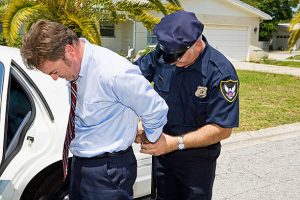
The Supreme Court of the United States is now in session. Two cases are to be heard on Wednesday, October 31. They are both from Florida and both involve the use of police dogs in the gathering of evidence in regards to illegal narcotics. The court will decide if such use violates the Fourth Amendment. That amendment states, “The right of the people to be secure in their persons, houses, papers, and effects, against unreasonable searches and seizures, shall not be violated, and no Warrants shall issue, but upon probable cause, supported by Oath or affirmation, and particularly describing the place to be searched, and the persons or things to be seized.”
Currently, the Bexar County Sheriff’s Office maintains a Canine Unit consisting of five handler officers and seven dogs. Some of the dogs are patrol dogs, some are bomb detection dogs, and some are narcotics detection dogs. Canines trained for the narcotics division are used to detect the scent of marijuana, heroin, methamphetamine, and cocaine. According to the Sherriff’s Office, the dogs can locate drugs in houses, cars, and even buried underground.
In the case of Florida v Jardines, (Oral Argument Transcripts) the defendant maintains that a warrantless “sniff test” by a dog at his home with live plants inside violated his right against unreasonable searches. Was a trained narcotics canine sniffing at a front door to a private residence a search under the Fourth Amendment and therefore a violation of privacy? The defense argues that the “sniff test” should have been conducted after there was evidence of a crime.
In the case of Florida v Harris, (Oral Argument Transcripts) a valid traffic stop for driving with an expired registration tag resulted in a warrantless search of the defendant’s truck. The police officer had his dog, Aldo, sniff the outside of the truck. Aldo “alerted” at the door handle and the officer searched the vehicle’s interior. The officer admitted at the trial that the dog can pick up lingering “residual odors”. Does an “alert” from an odor that could have been lingering for an unknown amount of time result in probable cause for a subsequent search?
Continue reading
 San Antonio Criminal Lawyers Blog
San Antonio Criminal Lawyers Blog


 unty Criminal
unty Criminal In 2014, the
In 2014, the  A very strange and appalling case out of a Fort Worth, Texas district court has made
A very strange and appalling case out of a Fort Worth, Texas district court has made  On Sunday February 25, 2018, Tiffany, Anthony, and their three young children who range in age from 7 to 10 years old had stopped to help Fadal’s mother at her home. While outside, and for reasons currently unknown, Fadal shot Anthony Strait and then turned and shot Anthony’s wife, Tiffany. Anthony apparently died at the scene and Tiffany later died at the hospital.
On Sunday February 25, 2018, Tiffany, Anthony, and their three young children who range in age from 7 to 10 years old had stopped to help Fadal’s mother at her home. While outside, and for reasons currently unknown, Fadal shot Anthony Strait and then turned and shot Anthony’s wife, Tiffany. Anthony apparently died at the scene and Tiffany later died at the hospital. ents and visitors who are found in possession of marijuana by the
ents and visitors who are found in possession of marijuana by the 

 In 1994, four young women in
In 1994, four young women in